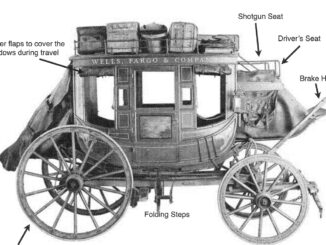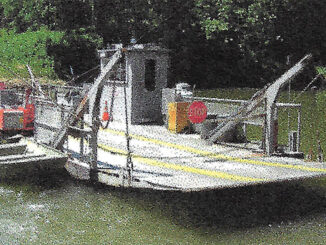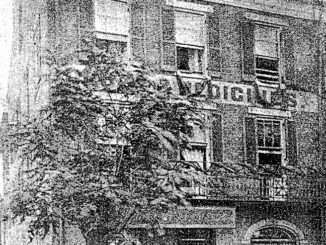
“The old home place.” Wow! That’s a phrase that conjures a variety of responses. To some it reminds them of where they lived in their childhood. Others envision their grandparents’ home which they visited often. Some may not have any such memories since their family moved locations often and never collected enough memories to endear them to a special structure. The phrase often elicits home places of famous people whose homes admirers like to visit: Elvis’s Graceland, Lincoln’s My Old Kentucky Home or Washington’s Mount Vernon to name a few.
Exploring in conversation during a “coffee hour” gathering of neighbors and friends or swapping adventures one had on vacation, the topic of the old home place is always a popular idea. Swapping ideas of adventures surrounding the location of this beloved site, remembering secrets hidden on the premises, recalling neighbors of importance to your life at the time… Gee… the conversation could go on for hours.
American travelers seem to have a fascination for famous people admired. Vacations find individuals visiting the homes of their favorite actor, actress or musical personality, or heroes of the various sports arenas, and, most popular, the great leaders of our nation. Online or in person, there is a vast selection of “old home places” to explore. Two very useful sources are the National Historic Landmarks and the National Register of Historic Places.
National Historic Landmarks is a listing of properties of significant value in representing a historical event that helps us understand the nationwide impact of this country. For example, local schools or universities are important to this nation, but Central High School in Little Rock, Arkansas is listed in the National Historic Landmarks due to the 1957 decision by President Eisenhower to send Federal troops to enforce desegregation at Central High School. Properties listed as Landmarks, as with the National Register, are listed after careful review by the National Park Service under the direction of the Secretary of the Interior.
The National Register of Historical Places is much larger. It contains over 90,000 entries, more than 2,500 of those being Landmarks. Properties listed on the Register are ones that have historical significance on a local or state level. Individuals or groups can easily obtain required forms, complete the necessary documentation and have a chance for their property of choice to be included in the Register.
The National Register lists entries by state and by county. Warren County, Kentucky has 120 historical places listed. These include not only beloved “home places” which hold special importance in this community, but also includes properties and districts of significance. Ten districts honored include College Hill District, Downtown Commercial, Magnolia Street, Oakland-Freeport, St. Joseph, Shake Rag, Smiths Grove, Upper East Main Street, Adams-Kentucky, and the Modern Automotive Districts.
Nine churches in the area have been recognized: Cecelia Memorial Christian Church, Drakes Creek Baptist, Fairview Methodist, First Colored Baptist, Mount Olive Cumberland Presbyterian, Old Log (Riverside), St. Joseph Roman Catholic, Smiths Grove Baptist, and Smiths Grove Presbyterian churches.
The National Register for Warren County lists seventeen buildings. These highlight notable structures at Western University and local government properties. Other entities listed included as historical places include three farms (Cave Spring, Michell-Estes Farmstead, Rose-Daughtry Farmstead), three bridges (Barren River L&N Railroad Bridge, College Street Bridge, Richardsville Road Bridge), two monuments (Confederate, William F. Perry), three forts (Fort C. F. Smith, Fort Lytle, Fort Webb), Lost River Archeological Cave, Horse Shoe Camp and The Hardcastle Store round out the list of non-residence sites.
The remaining lists of locations in Warren County that have been documented and presented to the Secretary of the Interior and were included in the area’s listings are residences of famous local individuals or because of unique identifiable characteristics. An example of the latter description is the John Jackson Ford house in Smiths Grove. Built over a two-period construction, it featured a fireplace in all four rooms. To protect the female members of the family, the stairway into the upstairs girls’ room was in the parents’ bedroom, a common feature in homes of the earliest settlers.
The William Glossom house, three miles out on 31W, is one of the oldest brick houses in the county. The Jesse Kirby house of Route 231 on Love Howell Road, was likewise made of bricks that were made in a kiln on the grounds by slave labor. The Kirby home has been possessed by multiple owners since its construction. In contrast, the James F. Ewing home has been lived in by related family during its existence. The Merritt-Harden house, a substantial country home built c.1844, is located ten miles south of Bowling Green. For its 135 years of existence, it has been occupied by individuals in direct line of the Merritt family.
Another notable home listed is the Tobias Grider home, built by the grandson of Robert Moore and featuring ten gables. This majestic home has been owned by the Deemer family since 1837. Located at 864 Fairview Avenue (its address was Bowling Green and the Ewing Ford Road in the 1800s), it is one of Bowling Green’s beautiful estates.
Another historical residence is located at 189 Beech Bend Road. When built, it was known as Seeley’s Bend. This landmark of Civil War days was the ancestral home of Edward Bush Seeley, active member of the Green and Barren River Navigation Company. He gained prominence as an astute businessman and promoter of education efforts in the county. The Seeley house has been the home of five generations of family. The quality of construction can still be viewed throughout the home. The wallpaper still looked brand new after one hundred years or more.
Three properties quickly recognized by Warren Countians were among those entered in the National Register. Ironwood, located on Richardsville Road, was built by Warner L. Underwood over one hundred years ago yet still stands as majestic and worthy of it being the first home listed in the Register. Mt. Arh, located on 31W on the hill to the left just past the bridge, was built by brother Joseph Underwood. The structure was greatly damaged in the Civil War and later used by commercial enterprises before its demise. The third property of renown is the Mariah Moore home built in 1827 by Mrs. Moore, widow of George Moore. These structures are ingrained in the minds of Bowling Green residents and treasured as our favorite “dear old home places.”
-by Mary Alice Oliver
About the Author: Mary Alice Oliver is a Bowling Green native who is a 1950 graduate of Bowling Green High School. She retired from Warren County Schools after 40 years in education. Visiting familiar sites, researching historical records and sharing memories with friends are her passions.





